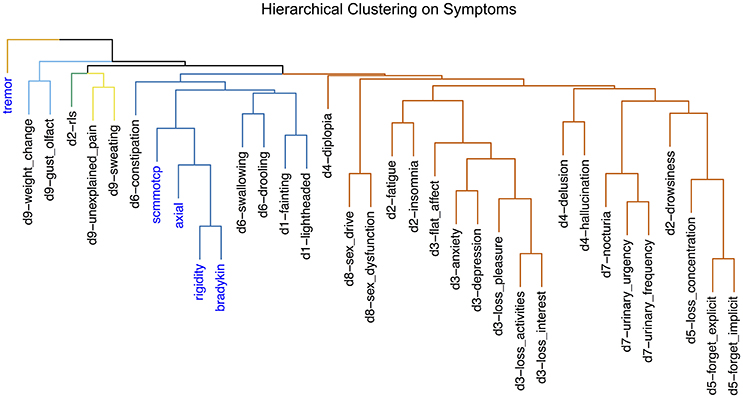To continue a theme from last week, it is vital that we continue to explore the role of neurotransmitters other than dopamine and structures other than the substantia nigra in the pathology of Parkinson's. I couldn't agree more with the first sentence from this paper, which itself offers a multi-disciplinary view of use of technology and smart analysis to unpick the heterogeneity we see in Parkinson's disease and understand what that means for the underlying disease process.
"Parkinson's disease is now considered a complex, multi-peptide, central, and peripheral nervous system disorder with considerable clinical heterogeneity"
Using existing datasets which have sought to characterise non-motor symptoms in Parkinson's, the authors utilise the statistical technique of cluster analysis to look for significant groupings of these symptoms. This is a great way of objectively validating what neurologists recognise in the clinic - that there are recognisable sub-types of Parkinson's disease, some more benign and some that progress quickly.
They were able to identify 4 clusters - a mildly affected group, a predominantly non-motor symptom group, a tremor-dominant group with minimal non-motor symptoms and a group severely affected in all areas except tremor. They also showed that there are clear groups of patients which are predominantly characterised by a specific symptom.
 |
| From: Front Aging Neurosci. 2017 Sep 20;9:301. doi: 10.3389/fnagi.2017.00301.eCollection 2017 |
-Anna
Front Aging Neurosci. 2017 Sep 20;9:301. doi: 10.3389/fnagi.2017.00301. eCollection 2017.
Parkinson's Disease Subtypes Identified from Cluster Analysis of Motor and Non-motor Symptoms.
Mu J, Chaudhuri KR, Bielza C, de Pedro-Cuesta J, Larrañaga P, Martinez-Martin P
Parkinson's disease is now considered a complex, multi-peptide, central, and peripheral nervous system disorder with considerable clinical heterogeneity. Non-motor symptoms play a key role in the trajectory of Parkinson's disease, from prodromal premotor to end stages. To understand the clinical heterogeneity of Parkinson's disease, this study used cluster analysis to search for subtypes from a large, multi-center, international, and well-characterized cohort of Parkinson's disease patients across all motor stages, using a combination of cardinal motor features (bradykinesia, rigidity, tremor, axial signs) and, for the first time, specific validated rater-based non-motor symptom scales. Two independent international cohort studies were used: (a) the validation study of the Non-Motor Symptoms Scale (n = 411) and (b) baseline data from the global Non-Motor International Longitudinal Study (n = 540). k-means cluster analyses were performed on the non-motor and motor domains (domains clustering) and the 30 individual non-motor symptoms alone (symptoms clustering), and hierarchical agglomerative clustering was performed to group symptoms together. Four clusters are identified from the domains clustering supporting previous studies: mild, non-motor dominant, motor-dominant, and severe. In addition, six new smaller clusters are identified from the symptoms clustering, each characterized by clinically-relevant non-motor symptoms. The clusters identified in this study present statistical confirmation of the increasingly important role of non-motor symptoms (NMS) in Parkinson's disease heterogeneity and take steps toward subtype-specific treatment packages.
Available from: https://www.researchgate.net/publication/319933517_Parkinson%27s_Disease_Subtypes_Identified_from_Cluster_Analysis_of_Motor_and_Non-motor_Symptoms [accessed Oct 06 2017].
No comments:
Post a Comment